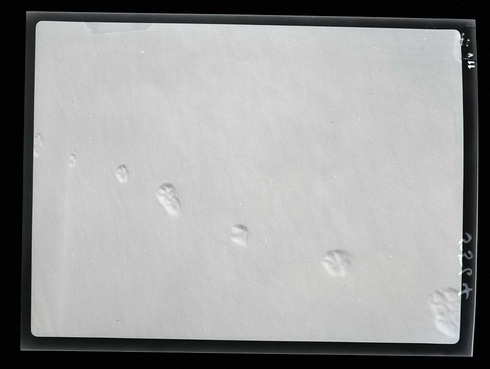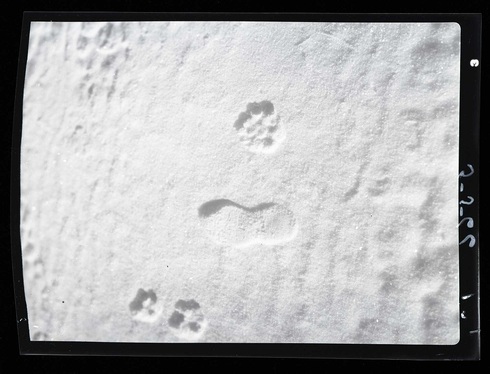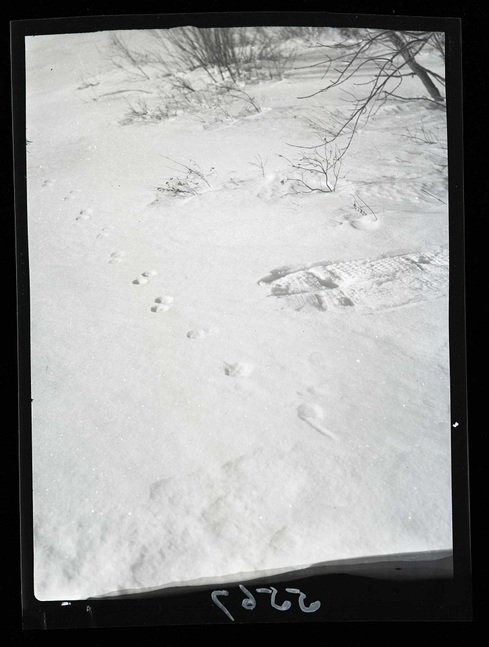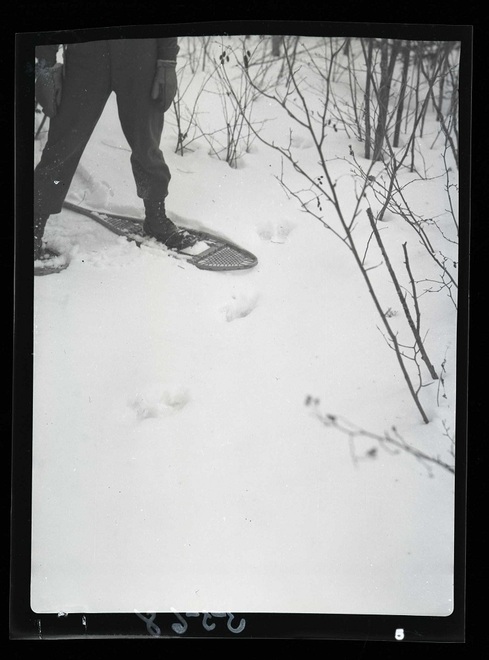Last week in the Star Tribune, Bill Marchel of Brainerd, Minnesota contributed an article on the utility of snow in tracking animal behavior, “… there’s a tattletale residing in our woods and fields. Lying, waiting, it is able to recall, with great detail, the habits of various creatures. That snitch, is, of course, snow.” Footprints and other markings left upon the snow can provide great clues that help track the location, sex, and diet of particular animals. Marchell’s article, “How to… track animals in the snow” goes in to further detail about animal tracking and promotes the “simple sport” as an easy and social winter activity.
In March of 1938, Walter J. Breckenridge, curator and preparator of the Museum of Natural History at the University, did a little animal tracking of his own. Donning a pair of snow shoes, Breckenridge documented wolf and fisher tracks on Insula and Little Saganaga lakes in northern Minnesota.

– Two-toed wolf track in snow, Insula Lake, Cook County, March 1938

– Track of Wolf and Walter J. Breckenridge in snow, Little Saganaga Lake, March 1938

– Fisher tracks in snow, Insula Lake, Cook County, March 1938

– Fisher tracks in snow, Insula Lake, Cook County, March 1938